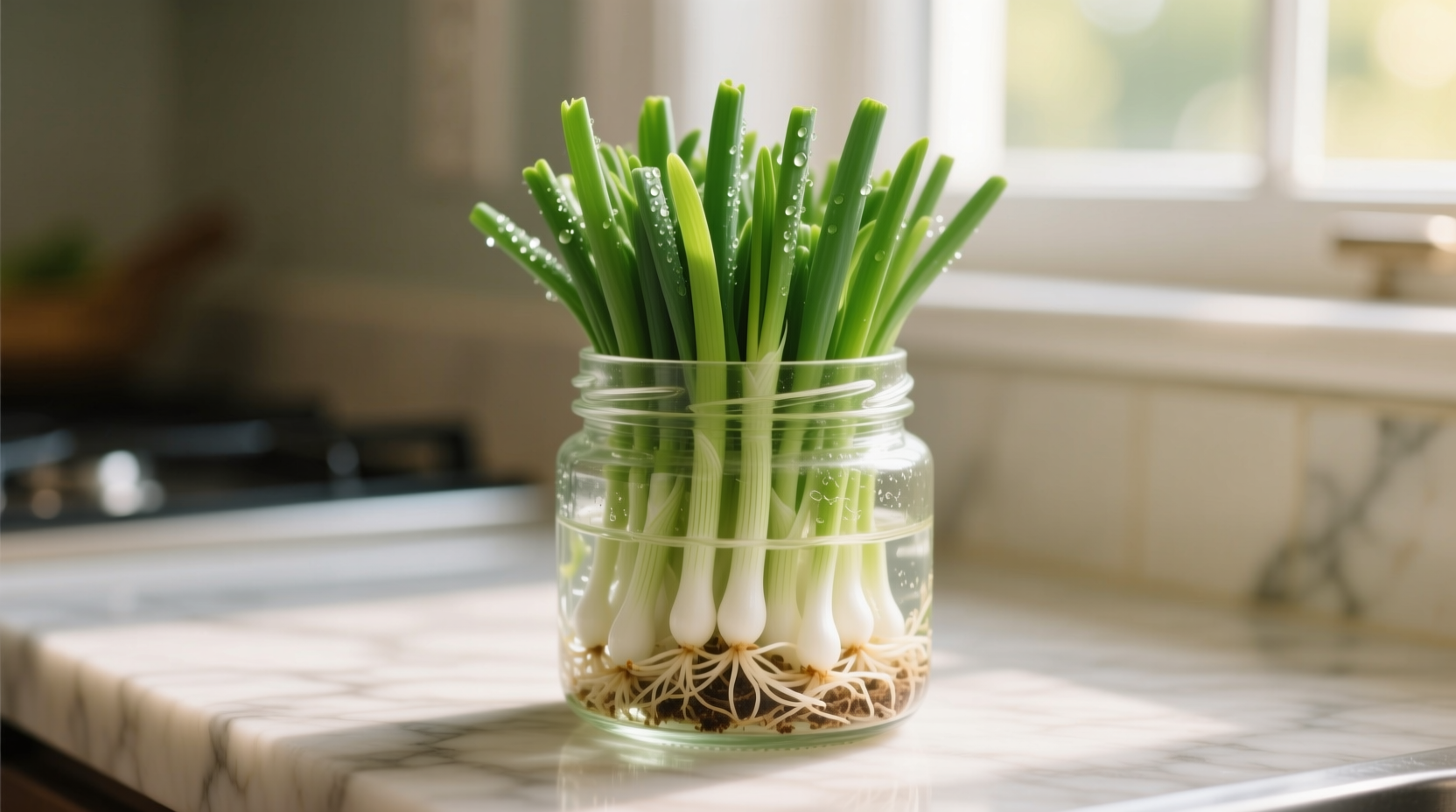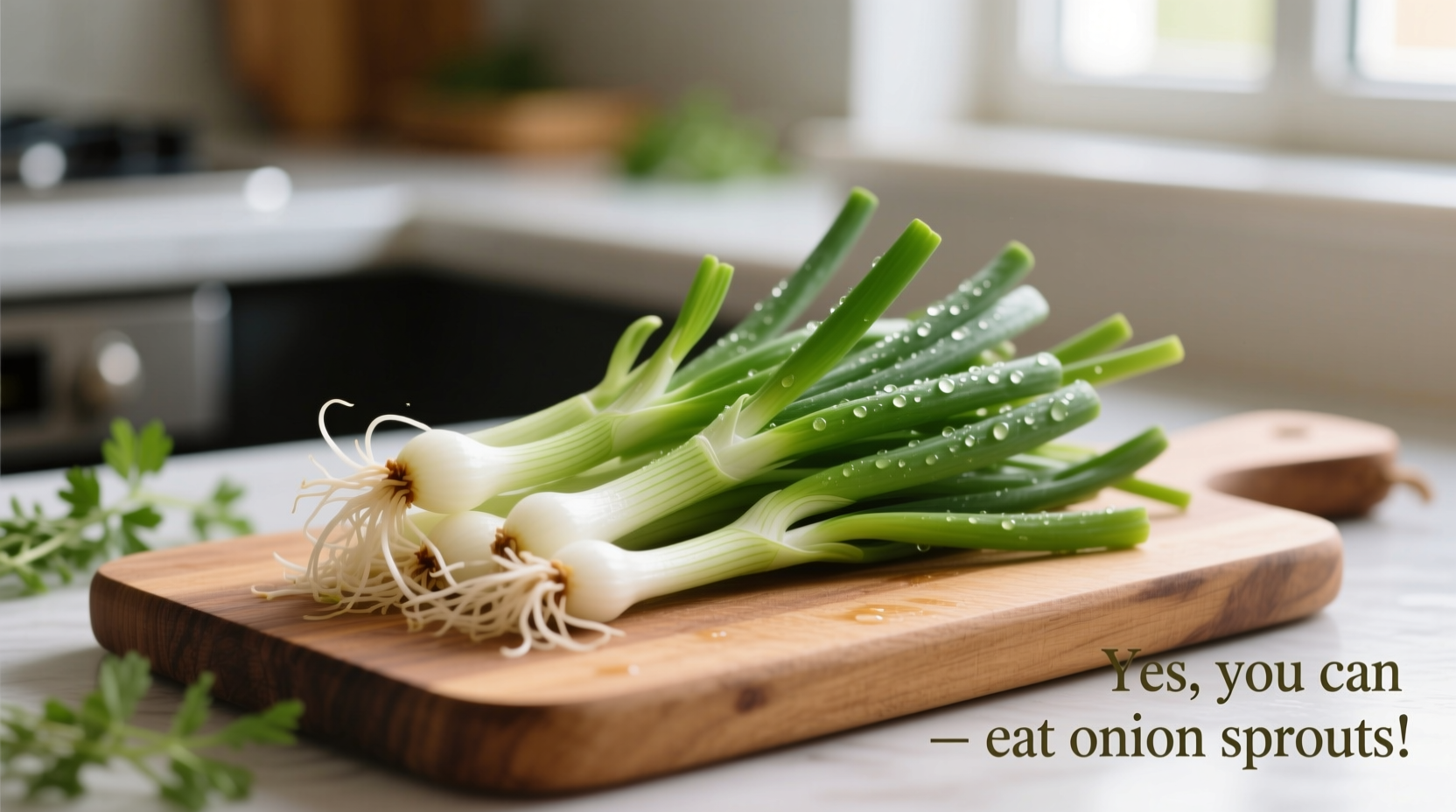Onion sprouts, the early growth stage of onion plants, have gained popularity among health-conscious cooks and gardeners. Unlike mature onions that make you cry, these delicate greens deliver a subtle, fresh onion flavor perfect for enhancing dishes without overwhelming them. Let's explore everything you need to know about incorporating this versatile ingredient into your diet.
Why Onion Sprouts Deserve a Spot in Your Kitchen
Onion sprouts aren't just edible—they're nutritional powerhouses. According to USDA nutritional data, these young greens contain higher concentrations of certain vitamins and antioxidants compared to their mature counterparts. The sprouting process activates enzymes that boost bioavailability of nutrients, making them easier for your body to absorb.
Professional chefs like those at James Beard Award-winning restaurants regularly feature onion sprouts in their dishes for both flavor and visual appeal. Their crisp texture and mild onion essence work beautifully as finishing touches on everything from scrambled eggs to gourmet salads.
Nutritional Benefits Backed by Research
Studies published in the Journal of Agricultural and Food Chemistry confirm that onion sprouts contain elevated levels of quercetin, a potent antioxidant with anti-inflammatory properties. Just one cup provides:
| Nutrient | Amount per 1 Cup | Daily Value % |
|---|---|---|
| Vitamin C | 18mg | 20% |
| Vitamin K | 28mcg | 23% |
| Folate | 22mcg | 6% |
| Quercetin | 45mg | * |
*No established daily value for quercetin, but research suggests 50-100mg daily provides health benefits

Safety First: Handling Onion Sprouts Properly
While onion sprouts are safe to eat, proper handling is essential. The FDA recommends treating all sprouts with care due to potential bacterial contamination risks during the sprouting process. Unlike commercial onion sprout producers who follow strict food safety protocols, home growers should:
- Rinse sprouts thoroughly under cool running water before consumption
- Consume within 3-5 days of harvest for peak freshness and safety
- Store in a clean, airtight container in the refrigerator
- Avoid sprouting in environments with temperatures between 70-80°F for extended periods
Unlike alfalfa or bean sprouts—which have higher food safety concerns due to their growing conditions—onion sprouts naturally contain antimicrobial compounds that reduce bacterial growth risks. Research from the University of California's Agriculture and Natural Resources department confirms that allium family plants (including onions) produce sulfur compounds that inhibit harmful bacteria.
How to Use Onion Sprouts in Your Cooking
Onion sprouts shine when used as a finishing element rather than cooked extensively. Their delicate flavor disappears with prolonged heat exposure. Here's how professional chefs incorporate them:
Breakfast Boost
"I add onion sprouts to scrambled eggs during the last 30 seconds of cooking," explains Antonio Rodriguez, culinary expert. "This preserves their crisp texture and fresh flavor while adding just the right onion note without overwhelming the dish."
Salad Enhancer
Toss sprouts into green salads for a mild onion flavor that won't overpower delicate greens. They pair particularly well with citrus vinaigrettes and goat cheese.
garnish Game-Changer
Top soups, roasted vegetables, or grain bowls with a small handful of sprouts for instant flavor elevation. Their vibrant green color adds visual appeal while delivering subtle onion essence.
Onion Sprouts vs. Other Common Sprouts
Understanding the differences helps you choose the right sprout for your needs:
| Sprout Type | Flavor Profile | Safety Considerations | Best Culinary Uses |
|---|---|---|---|
| Onion | Mild, fresh onion | Naturally antimicrobial | Finishing garnish, salads, eggs |
| Alfalfa | Nutty, earthy | Higher contamination risk | Salads, sandwiches (use cooked) |
| Broccoli | Peppery, mustard-like | Moderate risk | Salads, wraps, sandwiches |
| Mung Bean | Neutral, slightly sweet | Higher contamination risk | Stir-fries, spring rolls (often cooked) |
Growing Your Own Onion Sprouts: Simple Steps
Home cultivation eliminates many safety concerns associated with commercially grown sprouts. Here's a foolproof method:
- Place onion seeds in a clean sprouting jar or container
- Cover with cool water and soak for 8-12 hours
- Rinse twice daily with fresh water
- Harvest when sprouts reach 2-3 inches tall (typically 5-7 days)
- Refrigerate immediately after final rinse
For best results, use organic onion seeds from reputable suppliers like Johnny's Selected Seeds or Baker Creek Heirloom Seeds. Their quality control standards exceed FDA recommendations for seed safety.
When to Avoid Onion Sprouts
While generally safe, certain situations warrant caution:
- Compromised immune systems: Individuals with weakened immunity should cook sprouts briefly to eliminate any potential pathogens
- Unidentified sprouts: Never consume sprouts you can't positively identify—some toxic plants resemble edible varieties
- Damaged sprouts: Discard any with slimy texture, unpleasant odor, or discoloration
The American Dietetic Association recommends that pregnant women, elderly individuals, and those with chronic illnesses either avoid raw sprouts or cook them thoroughly. For onion sprouts specifically, a quick 10-second blanch in boiling water significantly reduces risk while preserving most nutrients.
Maximizing Flavor and Nutrition
To get the most from your onion sprouts:
- Harvest in the morning when nutrient concentrations peak
- Store in a paper towel-lined container to absorb excess moisture
- Add to dishes just before serving to preserve texture and nutrients
- Pair with vitamin C-rich foods to enhance iron absorption
Research from the Journal of Food Science shows that consuming onion sprouts with healthy fats like avocado or olive oil increases absorption of fat-soluble vitamins and antioxidants by up to 30%.
Frequently Asked Questions
Can you eat onion sprouts raw?
Yes, onion sprouts are safe to eat raw when properly grown and handled. Their mild flavor makes them ideal for raw applications like salads and garnishes. Just ensure you rinse them thoroughly under cool running water before consumption to remove any potential contaminants.
How long do onion sprouts last in the refrigerator?
Properly stored onion sprouts maintain freshness for 5-7 days in the refrigerator. Place them in a clean, airtight container lined with a paper towel to absorb excess moisture. Check daily and remove any sprouts showing signs of spoilage to prevent contamination of the entire batch.
Are onion sprouts the same as scallions?
No, onion sprouts and scallions differ significantly. Onion sprouts are the very young seedlings grown from onion seeds, typically harvested at 2-3 inches tall. Scallions (green onions) are mature plants with developed bulbs and longer green stalks. Sprouts have a milder flavor and more delicate texture than scallions.
Do onion sprouts have the same health benefits as mature onions?
Onion sprouts actually contain higher concentrations of certain nutrients like vitamin C and quercetin compared to mature onions. The sprouting process activates enzymes that increase bioavailability of nutrients. However, mature onions provide more fiber and certain sulfur compounds that develop as the plant matures.
Can onion sprouts cause digestive issues?
Most people tolerate onion sprouts well, especially compared to mature onions which contain more complex carbohydrates that can cause bloating. The mild nature of sprouts makes them gentler on digestion. However, individuals with severe onion allergies or irritable bowel syndrome should introduce them gradually to assess tolerance.











 浙公网安备
33010002000092号
浙公网安备
33010002000092号 浙B2-20120091-4
浙B2-20120091-4